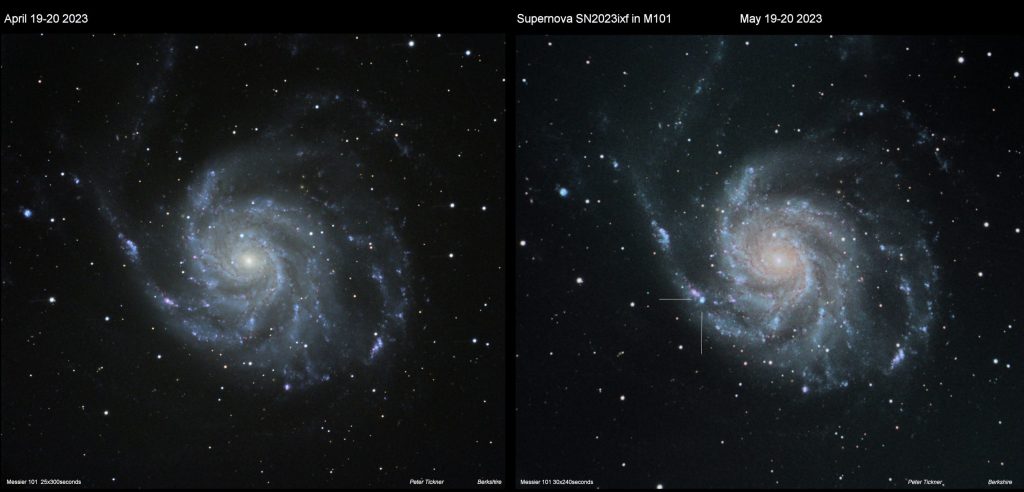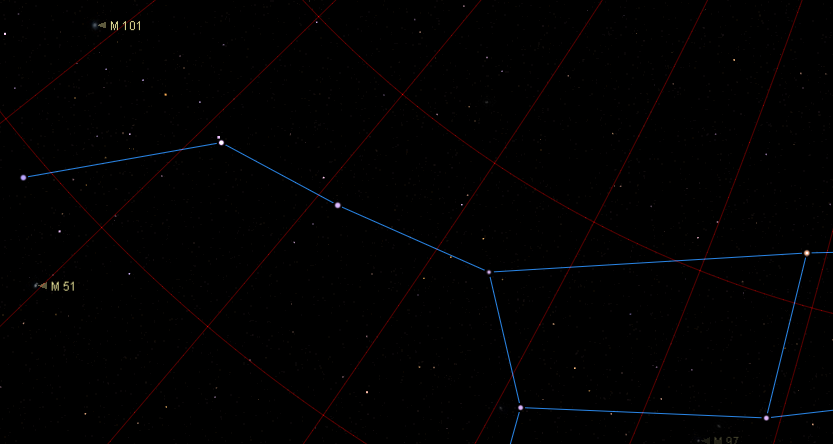2023 May 21
Bright Supernova in M101
On 19th May, Koichi Itagaki discovered a supernova in the nearby face on spiral galaxy M101, given the designation SN 2023ixf. The supernova was discovered at magnitude 14.9 and had brightened to 12th magnitude by the night of 20th/21st May. Below you can see before and after images taken by BAA member Peter Tickner.

SN 2023ixf is a type II supernova. These are the end of life of a massive star. The star runs out of fuel for nuclear fusion in its core, which leads to the rapid collapse of the core triggering a violent thermonuclear explosion that destroys the star.
M101 is a face on spiral galaxy in the constellation of Ursa Major, commonly known as the Plough. The galaxy is located just off the tail of the bear. The AAVSO have a finder chart for the supernova. You can adjust the scale by clicking ‘Plot Another Chart’ and view detailed photometry for the comparison stars by clicking ‘Photometry Table for this Chart’.

BAA members can upload their images and drawings to the Online Image Gallery. We encourage members to also submit their observations to one of the BAA Observing Sections. Images and drawings should be sent to Callum Potter, the Director of the Deep Sky Section. The Variable Star Section will be interested in digital and visual magnitudes measurements, and spectra. These can be uploaded to the BAA Photometry Database and the BAA Spectroscopy Database. Please contact Andy Wilson, the Variable Star Section Database Secretary, at vssdbm@britastro.org for details on how to submit to these databases.
The cover image is by BAA member David Strange.
| The British Astronomical Association supports amateur astronomers around the UK and the rest of the world. Find out more about the BAA or join us. |
